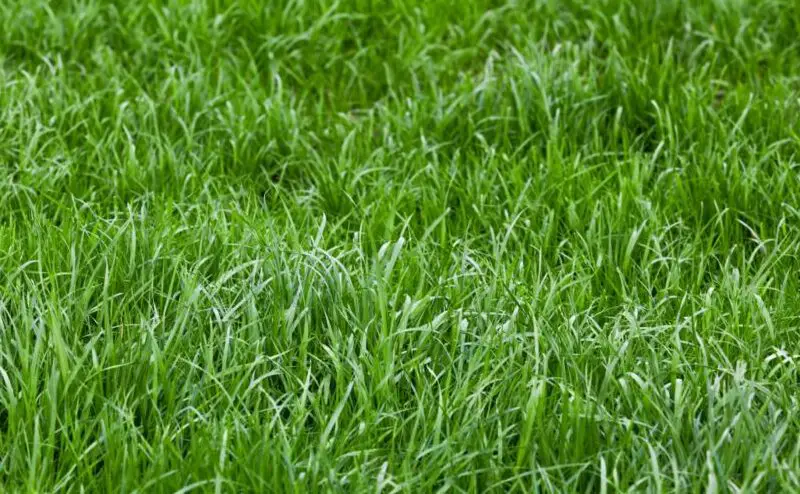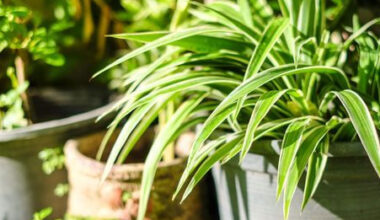Grasses are plants that are usually pulled out as soon as they are seen in a garden, but this is not always a good idea, because there are many that can be useful, either to attract pollinating insects, or to have a nice little lawn care.
In fact, some of the grasses that might be considered “weeds” but can form very interesting green mats are those of the Paspalum genus. These are very fast growing grasses that also live for several years.
Contents
Planting and maintenance of Bahia grass
The best time to sow bahia seeds is in spring and early summer. You can also sow in the fall, but the seed does not germinate until spring and growth is reduced. The most important factor is that the soil is warm; bahia grass will not germinate in cold soil. Use the Argentine cultivar if you live in South Florida. For Central and North Florida, use the Pensacola variety, which is more cold-hardy. Prepare for planting by tilling and leveling the soil.
Make sure the seeds lightly cover the soil by raking the seeded area after planting and use a hand roller to compact the soil around the seed. Although bahia grass does not need much moisture, germinating seeds do; make sure the area is well irrigated. Bahia seeds take at least a month to germinate, so be patient.
Feed the newly established lawn using a starter fertilizer. Once the lawn is established, you can fertilize in the spring, summer and fall, using an iron-rich fertilizer to prevent iron deficiency, indicated by yellowing. Avoid fertilizing in winter when the grass is semi-dormant.
Resist the urge to water, even if the grass is brown; it simply rests and will turn green in the spring. Mow your bahia grass to 2 1/2 to 3 inches every seven to 14 days to keep it healthy and prevent weeds from growing. You can also prevent weeds by not overwatering. Because of the strength of bahia grass, you will need to use a sharp blade to cut cleanly.
How to fertilize Bahia grass
Test your soil before applying fertilizer to your Bahia grass. Your local university horticulture department should have soil tests available. This will help you determine what type of fertilization your Bahia grass needs. Florida State University suggests having your soil tested once a year.
Apply a complete fertilizer that meets the needs of your soil 2 weeks after your Bahia grass begins to grow for spring. Apply 1 lb of slow release fertilizer for every 1,000 square feet. Apply the fertilizer evenly over the entire lawn.
Apply an additional 1 lb. for every 1,000 square feet of the same complete slow-release fertilizer in late spring.
Apply another application of the same complete slow-release fertilizer using the same amount, 1 lb per 1,000 square feet, in mid-summer. If you live in a climate with a longer growing season, you can add another application of fertilizer in early fall.
Can Bahia Grass be propagated by Roots?
Bahia grass (Paspalum notatum), a warm-season perennial grass, spreads by rhizomes – horizontal, underground, rootlets – and stolons – above ground, modified stems. Bahia grass, hardy to USDA zone 8B, prefers full sun to part shade, and various soils.
How do I kill Bahia grass?
The scientific name for Bahia grass is Paspalum notatum, a plant species native to Mexico and South America. The herb will generally have a V-shape at the end of the blade and is distinctive for being inflorescent, meaning that the V-shaped racemes (a term used to describe the V-shaped flowers that make up the V-shape) grow apart from each other in an outer cluster.
Buy a preventive growth control chemical from a home and garden store. Glyphosate is the best option; it is made under several brand names, including Touchdown 5 and Roundup UltraMax.
Disperse about 2 to 6 oz of it per acre. This will help control the growth of the bahia grass rather than killing it outright. The glyphosate will also cause little to no damage to your other grasses and plants.
Wait about two months for the diminished growth to become noticeable. When using a small rate, results will take longer to see. If the bahia grass continues to grow at the same rate, you can add more glyphosate to the grass (about 10 oz.), keeping in mind that this is more likely to turn the surrounding grass yellow.








